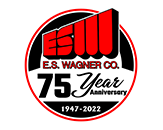E.S. Wagner is the concrete paving contractor and managing partner of this joint venture for the Ohio Department of Transportation. This highway road construction project is another section of the extensive Fort to Port reconstruction of US Route 24 between, Toledo, Ohio and Fort Wayne, Indiana. The project requires the construction of 10.5 miles of new highway with interchanges at US 424 and US 127.
As the road construction contractor of the joint venture, E. S. Wagner is responsible for all aspects of construction on this project except for the proposed concrete paving. This complex project requires careful coordination between roadway construction processes, bridge and structure work, management of over thirty subcontractors, and complicated traffic control while keeping impact to the environment and the adjacent property owners at an absolute minimum.
As part of the project, E.S. Wagner is constructing a total of seven bridges, six of which are large double structures on the proposed US 24. This structure work requires over 51,000 square feet of Mechanically Stabilized Earth Wall, almost 27,000 lineal feet of foundation piling and 7,400 cubic yards of quality control/quality assurance structural concrete.
From the roadway prospective, this is a massive grading and drainage project requiring 2.5 million cubic yards of embankment and nearly one million cubic yards of excavation. E.S. Wagner will also install approximately 215,000 tons of aggregate base, nearly 36,000 lineal feet of storm drainage up to 102 inches in diameter, and just over 72 miles of underdrain.
The centerpiece of the road construction project is the total reconstruction of the interchange between U.S. 24 and U.S. 424. The highway work at this location requires nearly 500,000 cubic yards of embankment, the largest bridge on the project, and the protection of an environmentally sensitive area which winds its way through the heart of the work area. All this must be done while safely maintaining the traffic flow of existing US 24 - one of the busiest and most dangerous state routes in the nation - through the use of a multi-phase traffic plan.
A major obstacle to the completion of the highway infrastructure project occurred in November 2007 when, due to weak subsurface soils unknown to the project designers, a large bridge embankment failed and required the removal and replacement of approximately 120,000 cubic yards of embankment. E.S. Wagner worked with the Ohio Department of Transportation to develop a solution that would not delay the completion of the project. Once authorized, E.S Wagner immediately mobilized the necessary manpower and equipment and altered the sequence of the remaining contract work. Despite this obstacle, E.S. Wagner anticipates completion of the expressway construction project on, or ahead, of the original schedule.
1 (800) 688-8651
salesinfo@eswagner.com




